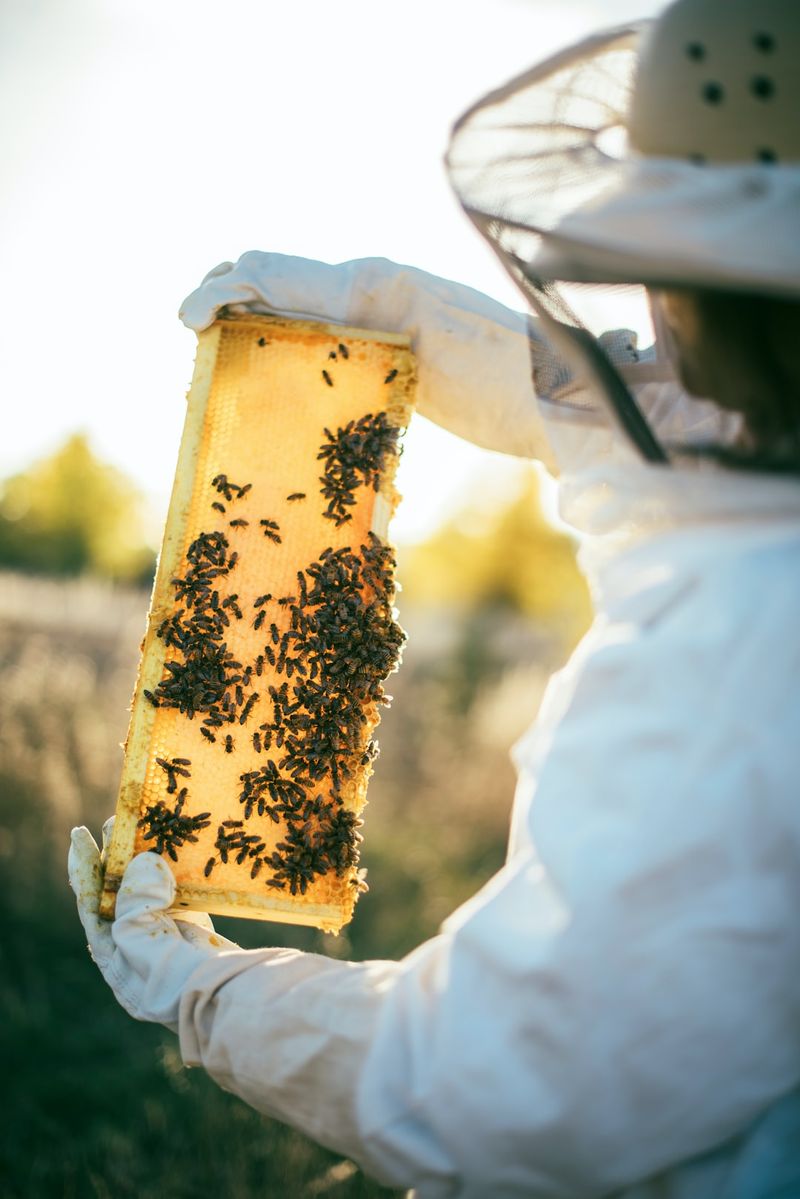Concern for native bee population as toxic baits used to kill feral European honey bees in varroa mite response
Introduction
There are growing concerns about the use of an insecticide called Fipronil in New South Wales to control the varroa mite outbreak, particularly its impact on the native bee population. This issue has prompted a petition, signed by over 34,000 people, calling for the immediate halting and removal of Fipronil baiting in the affected areas. While the NSW Department of Primary Industries (DPI) argues that the measures are necessary to target the feral European honeybee population and limit the spread of the varroa mite, critics argue that the use of Fipronil poses a significant risk to native bees and other insects.
Understanding Fipronil and its Impact
Fipronil is an insecticide that affects the nervous system of insects, including bees. Under the varroa mite emergency response, the DPI is euthanizing beehives within eradication zones to control the deadly parasite. Additionally, Fipronil bait stations are being used to target wild nests of feral European honeybees. The purpose of these bait stations is to attract honeybees with a sweet liquid that is laced with a toxic sugar syrup. The hope is that the honeybees will collect the syrup and take it back to their nests, where it will kill off the colony.
However, concerns have been raised about the unintended consequences of this approach. While strict protocols are in place to prevent Fipronil from impacting native bees and other wildlife, there is evidence that native bees could consume Fipronil through dead European honeybee nests. This can occur when native insects and animals visit the nests and collect contaminated honey. The Australian Native Bee Association warns that some of these native species may die from Fipronil poisoning.
The Importance of Targeting Feral European Honeybees
The DPI argues that targeting the feral European honeybee population is crucial for eradicating the varroa mite from New South Wales. The varroa mite is a destructive parasite that has devastating effects on honeybee colonies. It weakens the bees’ immune systems and can eventually lead to the collapse of entire hives. If left uncontrolled, the varroa mite could cause significant damage to the honeybee industry and affect pollination, ultimately impacting the agricultural sector.
Alternative Approaches
New Zealand has been living with the varroa mite since 2000 and has adopted different strategies to manage its impact. Auckland Beekeepers Club President, Martin Garside, has suggested that rather than attempting to eradicate the mite completely, efforts should be focused on controlling its spread. This approach acknowledges the difficulty of complete eradication and instead aims to manage the mite’s impact on honeybee colonies.
The DPI’s Stance
The DPI maintains that Fipronil is necessary for the eradication of the varroa mite and argues that the concentration of Fipronil used in the bait stations is significantly weaker than that used in common flea treatments for dogs available in Australia. They also state that trained officers carefully monitor the bait stations to ensure that Fipronil is only added when European honeybees are highly active, and that it is removed after a supervised period to prevent access by other species.
Editorial: Balancing Pest Control and Environmental Preservation
The concern for native bee populations in the varroa mite response highlights a broader challenge that policymakers and conservationists face—the delicate balance between controlling feral pests and protecting native biodiversity. While it is essential to address the varroa mite outbreak to safeguard the honeybee industry and ensure pollination, it is equally crucial to consider the potential unintended consequences on native species.
Environmental Impacts of Pest Control
Pest control measures, such as the use of toxic baits, can have far-reaching effects on ecosystems. It is vital to recognize that every species, including non-target species, plays a significant role in maintaining a healthy ecosystem. Native bees, for instance, are essential pollinators that contribute to biodiversity and ecosystem services. Their decline could have cascading effects on plant reproduction, biodiversity, and food security.
Finding a Sustainable Approach
In managing pest control measures, it is vital to find a balanced and sustainable approach that minimizes harm to non-target species. This could involve exploring alternative pest control methods, such as using pheromone traps or implementing targeted pest management strategies that have proven effective in other countries, like New Zealand.
Collaboration and Research
Addressing the varroa mite outbreak and safeguarding native bee populations requires collaboration among stakeholders, including beekeepers, conservationists, scientists, and government agencies. Additionally, ongoing research is crucial to better understand the potential long-term impacts of pest control measures on native bees and develop more effective and targeted approaches.
Advice for Sustainable Pest Control
Beekeepers
Beekeepers can play a critical role in protecting native bees and minimizing the use of harmful insecticides. They should focus on implementing integrated pest management strategies that prioritize the health of honeybee colonies while minimizing the impact on native species. This may involve regularly monitoring hives for signs of varroa mite infestation, implementing hive hygiene practices, and considering alternative treatments that are less harmful to native bees.
Government Agencies
Government agencies responsible for pest control should prioritize the development and implementation of targeted and environmentally friendly pest management strategies. This may involve investing in research and development to identify alternative methods and conducting thorough risk assessments to ensure that the chosen approach does not have unintended adverse effects on native species. Additionally, collaboration with stakeholders, such as beekeepers and conservation groups, is essential to ensure that the chosen strategies are transparent, effective, and sustainable.
Conservationists
Conservation organizations play a crucial role in advocating for the protection of native bees and other pollinators. They should continue to raise awareness about the ecological importance of native bees and the potential risks associated with pesticide use. Conservationists can also contribute to research efforts by conducting studies on the impact of pest control measures on native bee populations and advocating for policies that prioritize biodiversity conservation.
In conclusion, the concern for native bee populations in the varroa mite response highlights the need for a balanced and sustainable approach to pest control. While targeting feral pests like European honeybees is essential, efforts must also be made to minimize the unintended harm to native species. Collaboration, research, and the adoption of alternative pest control methods can help achieve this balance and ensure the long-term preservation of native bees and biodiversity.

<< photo by HiveBoxx >>
The image is for illustrative purposes only and does not depict the actual situation.
You might want to read !
- The Down Under Dilemma: Decoding the USAB Exhibition Schedule at the FIBA World Cup
- A Purrfect Fortune: The World’s Pricey Pussycats
- Opal’s Redemption: Liz Cambage’s Fight for Justice and Future Triumphs
- “The Unforgettable Legacy of William Friedkin: A Masterful Tale of Horror and Authentic Cinema”
- “Exploring the Unsettling Genius of William Friedkin: From The Exorcist to The French Connection”
- The Dominance of Bryson DeChambeau: Breaking Records and Defying Expectations




